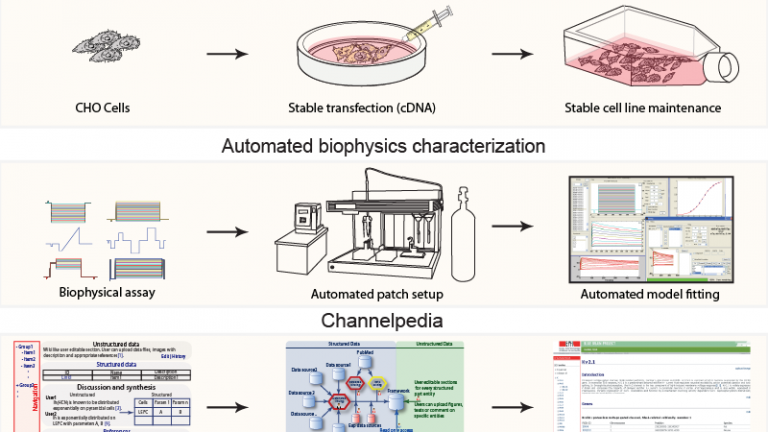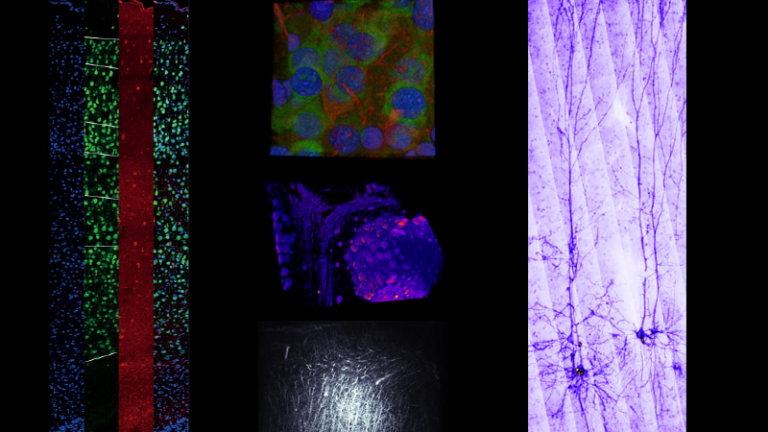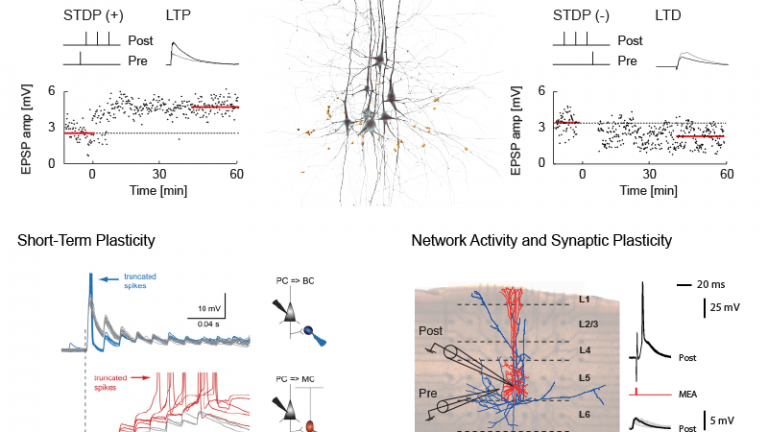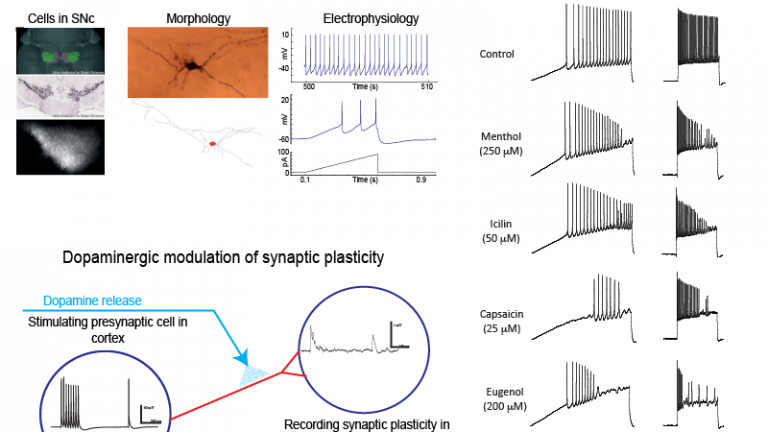
Electrophysiology & Microcircuits
The LNMC has always been in the forefront in electrophysiological characterization and classification of cortical neurons. We use up to 12 multi-patch clamp setups to study the individual neuronal properties and quantify the principles of local connectivity between these neurons (microcircuits). We are also further exploring the role of other brain components in neuronal activity, such as how astrocytes affect neuronal circuits.

Channelome
More than 350 ion channels are responsible for the electrical diversity of neocortical neurons. The aim of the Channelome project is to characterize biophysics of these ion channels in a controlled and consistent environment with an automated patch clamp setup.

Neuroanatomy
Using 3D reconstructions of neurons our goal is to map: 1) the complete set of cortical neuron morphologies, 2) the relative composition of cortical neuron subtypes, and 3) the long range projections between cortical microcircuits and other brain structures. 4) The morphology and architectural relationships between neurons, glia and vasculature

Plasticity
Keeping in line with earlier pathbreaking work by Henry Markram, the lab continues to study short and long term plasticity, occurring under different time scales ranging from few milliseconds to hours.

Neuromodulation
Classic neuromodulators, such as dopamine, are known to shape behavior, mediate information relating the value of past experience and behaviors (e.g. reward) and to consolidate memories. We explore the effects of neuromodulation on the properties and dynamics of microcircuits.